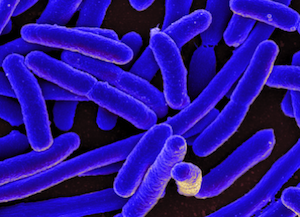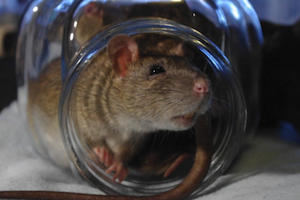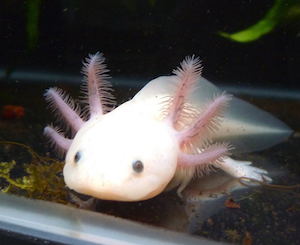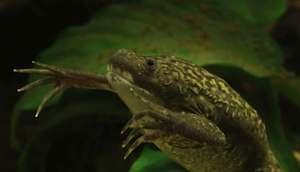By Justin Ng and Alyssa Cecchetelli
Science is a constantly evolving and demanding field, requiring a variety of biological and molecular tools. One such tool is the model organism, an essential aspect of biological research that has defined our understanding of biological processes and developments. Model organisms often feature genetic, physiological, or developmental characteristics that make them ideal for studying in a laboratory environment. We’ve covered five model organisms in a previous blog post, but here are five more model organisms that have left a historical impact on the scientific community.
(And, check out this blog post to see even more genetic systems for emerging model organisms!)
Escherichia coli
One of the most recognizable and utilized model organisms is Escherichia coli. The bacterium has been used as a model organism for over 60 years with a status as the most studied prokaryotic organism. With its fast growth rate, small size, and low cost, it’s understandable why E. coli is the most popular bacterial organism in microbiology and biochemistry. Certain strains have been specifically developed to thrive in laboratory settings. One of its most attractive features is its stability and easily obtainable growing conditions. As a facultative aerobe, it can thrive with or without oxygen. Additionally, its status as a Biosafety Level 1 microbe makes it a perfect candidate for introductory teaching and research environments (Idalia & Bernardo, 2017).
 |
| Escherichia coli. Image from NIAID. |
E. coli is often a part of the “molecular biologist tool box” for its common use in plasmid manipulation and genetics research. Plasmids are ideal tools for studying genetic modification for their ease of manipulation and their ability to be replicated. Because E. coli are easily propagated and have a generation time of around 20 minutes, they are perfect for molecular cloning and metabolic engineering.
The E. coli genome has an extensive research history and characterization. Many proteins and processes naturally found in E. coli have been manipulated for use in molecular biology studies. For example the E. coli biotin ligase, BirA, has been used to identify and study protein-protein interactions in proximity labeling techniques such as BioID (Roux et al., 2012) and APEX (Rhee et al., 2013). Research using E. coli has the potential to address many areas of microbial research like metabolism. Transport, biofilms, and much more. Because of it’s BSL-1 status, E. coli can be used as a model to relate these processes in more pathogenic bacteria (Blount, 2015).
Rattus norvegicus
Rattus norvegicus, or the rat, is another popular model organism. A close relative to the mouse, both are great mammalian models due to their size, physiology, and genetic similarities with humans. However, rats have some key differences in physiology, intelligence, and human correspondence that give them an edge as a disease mode (Iannaccone et al., 2009). Rats are larger than mice making them more useful for certain studies that involve surgery or imaging.
 |
| Rattus norvegicus. Image from Staffan Vilcans. |
Rat physiology is also easier to study and at times more closely corresponds with human diseases and conditions. For example, the rat is frequently used to study human cardiovascular disease, specifically stroke and hypertension (Iannaccone et al., 2009). Rodents have also been routinely used in an array of neuroscience research (Ellenbroek and Youn, 2016). For these reasons rats were once the most used mammalian model in medical research with an archive of information and data that has yet to be produced with mice (Iannaccone et al., 2009).
While the rat as a model organism has its perks, it is far from perfect. One of the most limiting attributes of rats is their difficult to manipulate genome and limited genetic data. To bridge this gap, the Rat Genome Sequencing Project conducted a large scale sequencing and concluded that nearly all disease-linked human genes have counterparts in the rat (Gibbs, et al., 2004). Additionally, breakthroughs in gene modification tools and methods such as CRISPR have vastly improved scientists’ ability to use rats as disease models.
Check out Addgene’s collection of plasmids
containing Rattus norvegicus genes!
Mexican axolotl (Ambystoma mexicanum)
 |
| Ambystoma mexicanum, aka the axolotl. Image from AJC1. |
The Mexican axolotl is one of the most unique model organisms, recognized for its incredible regeneration abilities. The axolotl has the ability to regenerate complex structures such as limbs, the spinal cord, and internal organs including the heart, brain, and lungs (McCusker and Gardiner, 2011). As many biological processes and signaling pathways that regulate regeneration and wound healing are conserved across species, studying the axolotl may reveal the potential humans have for a similar degree of regeneration. In addition, axolotls have many age-related phenotypic changes that are similar to those observed in humans. Thus, understanding their life cycle and processes with their regenerative abilities is expected to shed light on human aging pathological developments (Vieira et al., 2019)
Besides their ability to regenerate, the axolotl has several attractive characteristics that make them an ideal model organism; they are relatively simple to maintain and breed and they have large, easily modifiable embryos, which is ideal for observing and manipulating the entire developmental cycle. A majority of studies involving axolotls focus on embryonics and biochemistry. Though limited at first, advances in axolotl genome sequencing have vastly expanded axolotl research. One of the most significant advances is the sequencing of the entire axolotl genome, revealing an abundance of genes related to limb regeneration (Vieira et al., 2019). To study regeneration scientists have created molecular biology tools to generate transgenic axolotls for an array of different studies. Elly Tanaka’s lab has constructed several vectors for use in the axolotl including plasmids for use in CRISPR and Tol2 transposase induced transgenesis.
Xenopus
Xenopus, or frogs, are one of the most popular model amphibians in science with early research providing insight into some of the most significant and fundamental biological processes. Many of their genetics and developmental patterns are conserved, making them great models for human disease research. One of their most attractive features are their eggs. Frog eggs are large, opaque, and produced in abundance, making them useful for in vivo studies. These attributes make frog eggs some of the most useful tools in developmental and biomedical research.
 |
| Xenopus, aka African frog. Image from Holger Krisp. |
The frog genome has high synteny with that of humans so they are often used to study vertebrate embryology and cell development. One major resource for frog research is The National Xenopus Resource, a breeding facility for X. laevis and X. tropicalis, the two most commonly used species of frog. (Liu et al., 2016). Some of the most popular tools for studying frogs include egg transplants and microinjections. Injections of mRNAs, for example, can be analyzed to understand human disease alleles during and after embryogenesis. Addgene has over 600 plasmids that contain Xenopus genes and a tool-kit from the Hamdoun Lab to create fluorescent fusions in a multitude of organisms including Xenopus. Overall, the ability for scientists to study human disease-relevant genes in such a controlled environment displays how essential the frog is as a biomedical model organism.
Arabidopsis thaliana
Arabidopsis thaliana is one of, if not the most, recognized plant model organisms in the world. With its extensive scientific history, highly characterized genome, and widespread utilization, Arabidopsis has made significant contributions to understanding plant and crop science alike.
Arabidopsis has many of the traits that make an ideal model organism: quick development, a large number of offspring (produces many seeds), self fertilizing, a small yet highly characterized genome, and is easily maintained in a laboratory environment. What sets Arabidopsis apart from other plant model organisms is its thoroughly developed and defined history in research (Krämer, 2015). As a result, a vast array of molecular tools, such as gene manipulation and mutagenesis techniques, are available to the scientific community.
The Arabidopsis genome project marked the beginning of widespread Arabidopsis genetics research development. Arabidopsis thaliana was fully sequenced by the year 2000, becoming the first plant to have its entire genome sequenced (Koornneff and Meinke, 2010). From there, scientists around the world worked to characterize each gene’s function. Some key genetics research with Arabidopsis include understanding of allelic variation between different plant species and metabolic properties affecting adaptations.
 |
| Arabidopsis thaliana flowers. Image from BlueRidgeKitties. |
If you are working with Arabidopsis check out the GreenGate Toolkit which allows for easy cloning of constructs specifically designed for use in Arabidopsis. There are also important tips for plant transformations and the use of Arabidopsis in the classroom on our blog.
Now that you’ve learned more about popular model organisms in the lab, check out Addgene’s plasmid collections to help start your experiments!
References:
Blount, Z. D. (2015). The unexhausted potential of E. coli. ELife, 4. https://doi.org/10.7554/elife.05826
Blum, M., & Ott, T. (2018). Xenopus: An Undervalued Model Organism to Study and Model Human Genetic Disease. Cells Tissues Organs, 205(5–6), 303–313. https://doi.org/10.1159/000490898
Gibbs, R., Weinstock, G., Metzker, M. et al. Genome sequence of the Brown Norway rat yields insights into mammalian evolution. Nature 428, 493–521 (2004). https://doi.org/10.1038/nature02426
Iannaccone, P. M., & Jacob, H. J. (2009). Rats! Disease Models & Mechanisms, 2(5–6), 206–210. https://doi.org/10.1242/dmm.002733
Idalia, V.-M. N., & Bernardo, F. (2017). Escherichia coli as a Model Organism and Its Application in Biotechnology. In Escherichia coli - Recent Advances on Physiology, Pathogenesis and Biotechnological Applications. InTech. https://doi.org/10.5772/67306
Koornneef, M., & Meinke, D. (2010). The development of Arabidopsis as a model plant. The Plant Journal, 61(6), 909–921. https://doi.org/10.1111/j.1365-313x.2009.04086.x
Krämer, U. (2015). Planting molecular functions in an ecological context with Arabidopsis thaliana. ELife, 4. https://doi.org/10.7554/elife.06100
Liu, L. S., Zhao, L. Y., Wang, S. H., & Jiang, J. P. (2016). Research proceedings on amphibian model organisms. Dong wu xue yan jiu = Zoological research, 37(4), 237–245. https://doi.org/10.13918/j.issn.2095-8137.2016.4.237
McCusker, C., & Gardiner, D. M. (2011). The Axolotl Model for Regeneration and Aging Research: A Mini-Review. Gerontology, 57(6), 565–571. https://doi.org/10.1159/000323761
Modlinska, K., & Pisula, W. (2020). The Norway rat, from an obnoxious pest to a laboratory pet. ELife, 9. https://doi.org/10.7554/elife.50651
Vieira, W. A., Wells, K. M., & McCusker, C. D. (2019). Advancements to the Axolotl Model for Regeneration and Aging. Gerontology, 66(3), 212–222. https://doi.org/10.1159/000504294
Wang, T., Guan, C., Guo, J., Liu, B., Wu, Y., Xie, Z., Zhang, C., & Xing, X.-H. (2018). Pooled CRISPR interference screening enables genome-scale functional genomics study in bacteria with superior performance. Nature Communications, 9(1). https://doi.org/10.1038/s41467-018-04899-x
Yokoyama, Maho. (2020, May 28). E. coli as a Model Organism. News-Medical. Retrieved on September 18, 2020 from https://www.news-medical.net/life-sciences/E-coli-as-a-Model-Organism.aspx.
Additional resources on the Addgene blog:
- Read more about model organisms in the first Five Popular Model Organisms blog post
- Read more about plasmids in our Plasmids 101 blog series
- Learn more about CRISPR and genome editing in our CRISPR 101 blog series
Resources on Addgene.org:
- Browse our plasmid collection page
- Find more plasmids and resources for plant resources on Plant Plasmids Collection Page
- Read our molecular biology reference
- Find plasmids for your research





Leave a Comment